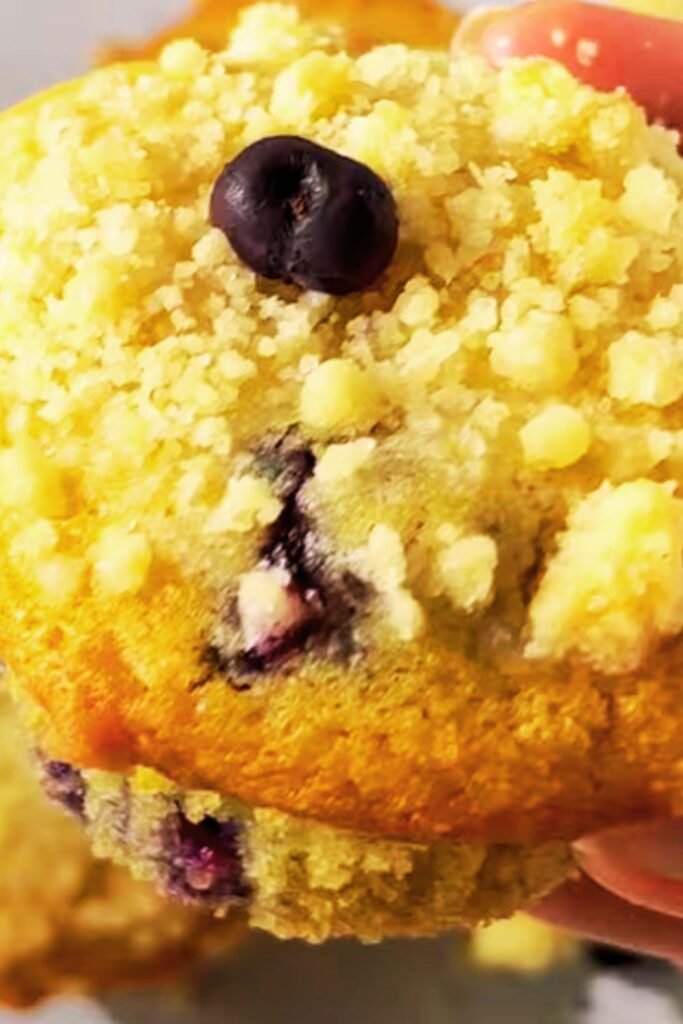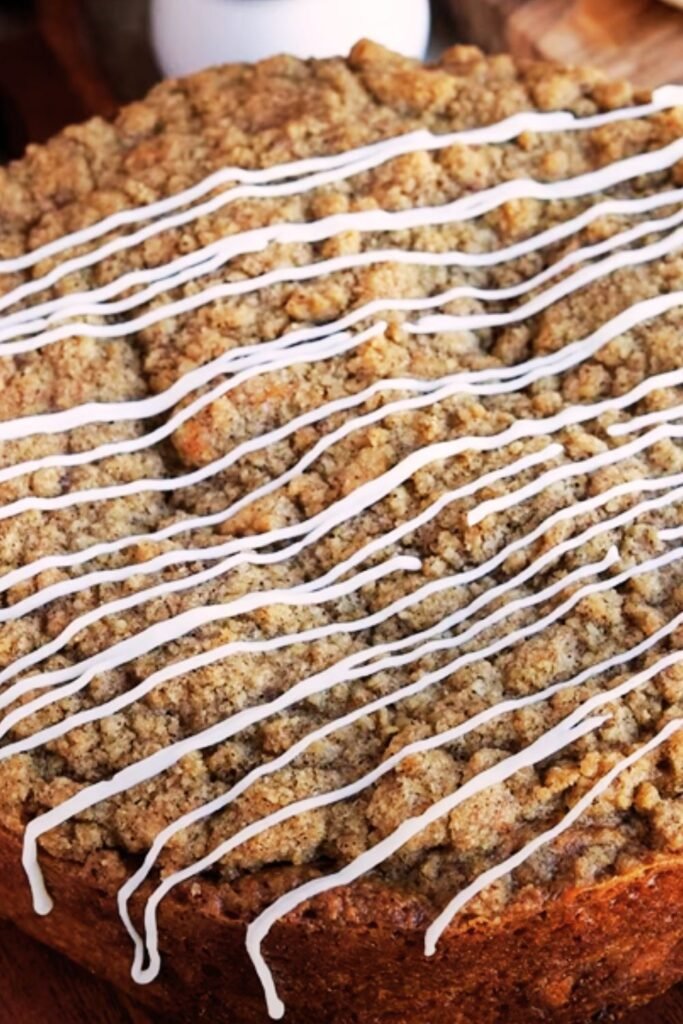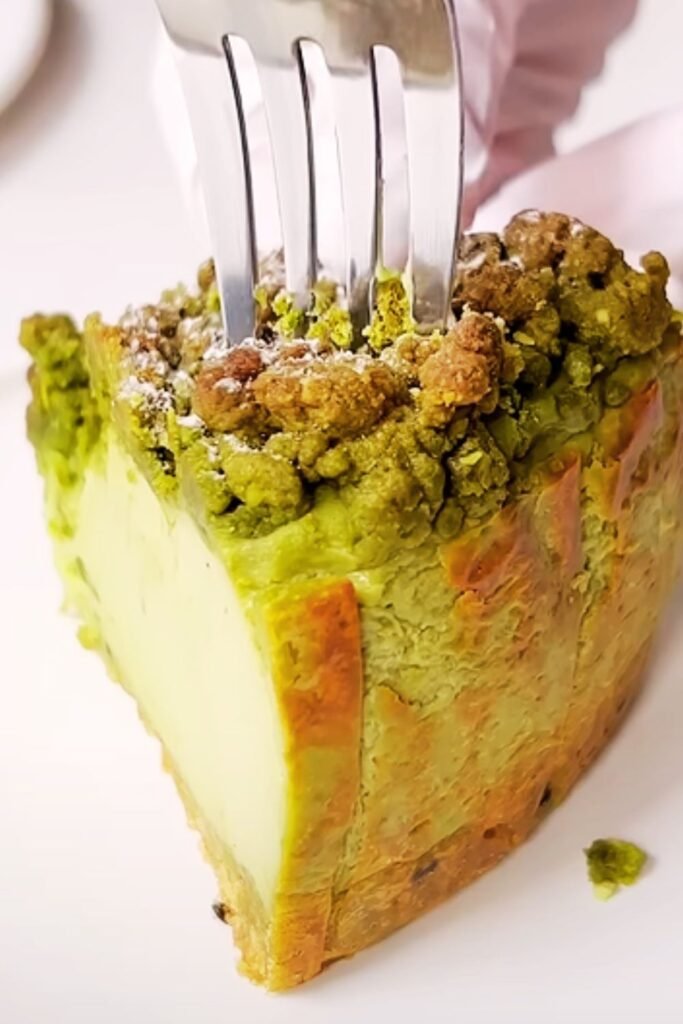When it comes to European pastries, German baking traditions hold a special place in my heart. Today, I’m excited to share one of my absolute favorites with you: Raspberry Streuseltaler. These delightful, individual-sized pastries combine a tender, buttery dough with a sweet-tart raspberry filling and a crunchy streusel topping that will transport you straight to a charming German bakery.
As someone who has spent years perfecting this recipe, I can promise you that while these pastries look impressive, they’re actually quite approachable to make at home. The name “Streuseltaler” comes from “Streusel” (the crumbly topping) and “Taler” (which refers to their round, coin-like shape). They’re a beloved treat throughout Germany, particularly in the southern regions.
In this comprehensive guide, I’ll walk you through every step of creating these magnificent pastries, from preparing the perfect dough to achieving that signature crumbly topping. By the end, you’ll be ready to bring a touch of German baking tradition into your own kitchen.
The History and Cultural Significance of Streuseltaler
Before we dive into the recipe, let’s take a moment to appreciate the rich heritage behind these pastries. Streuseltaler have been a staple in German bakeries for generations. They’re part of the country’s robust tradition of “Kaffee und Kuchen” (coffee and cake), a cherished afternoon ritual similar to British tea time.
The origins of Streuseltaler date back several centuries, with regional variations found throughout Germany, Austria, and parts of Switzerland. Traditionally, these pastries were made to use seasonal fruits, with raspberry being one of the most beloved variations. In many German households, the recipe has been passed down through generations, with each family adding their own special touch.
What makes Streuseltaler special is their perfect balance of textures and flavors. The slightly sweet yeast dough provides a tender base, while the fruit filling adds moisture and tanginess, and the streusel topping delivers a satisfying crunch. They’re substantial enough to be satisfying but not so heavy that they weigh you down—perfect for an afternoon treat.
Ingredients You’ll Need
For the best results, I recommend using high-quality ingredients. Here’s what you’ll need to gather before getting started:
For the Dough:
- 500g (4 cups) all-purpose flour
- 80g (⅓ cup) granulated sugar
- Pinch of salt
- Zest of one lemon
- 1 packet (7g or 2¼ teaspoons) active dry yeast
- 80g (⅓ cup) unsalted butter, melted and cooled
- 250ml (1 cup) lukewarm milk
- 1 large egg, room temperature
- 1 teaspoon vanilla extract
For the Raspberry Filling:
- 450g (3½ cups) fresh or frozen raspberries
- 100g (½ cup) granulated sugar
- 2 tablespoons cornstarch
- 2 tablespoons lemon juice
- 1 teaspoon vanilla extract
For the Streusel Topping:
- 150g (1¼ cups) all-purpose flour
- 100g (½ cup) granulated sugar
- 100g (7 tablespoons) cold unsalted butter, cubed
- 1 teaspoon ground cinnamon
- ¼ teaspoon salt
For the Glaze (Optional):
- 120g (1 cup) powdered sugar
- 2-3 tablespoons milk or cream
- ½ teaspoon vanilla extract
Equipment Required
Having the right tools on hand will make the baking process much smoother:
- Large mixing bowl
- Stand mixer with dough hook attachment (optional but helpful)
- Medium saucepan
- Measuring cups and spoons
- Baking sheets
- Parchment paper
- Rolling pin
- Pastry brush
- Wire cooling rack
- 10-12 cm (4-inch) round cookie cutter or glass
Step-by-Step Instructions
Now, let’s break down the process of making these delicious pastries into manageable steps.
Preparing the Dough
- In a large bowl, whisk together the flour, sugar, salt, and lemon zest.
- In a separate bowl or measuring cup, combine the lukewarm milk and yeast. Let it sit for about 5 minutes until foamy.
- Add the melted butter, egg, and vanilla extract to the milk mixture and whisk to combine.
- Make a well in the center of the dry ingredients and pour in the wet mixture.
- Mix until a shaggy dough forms, then transfer to a floured surface.
- Knead the dough for about 8-10 minutes until smooth and elastic. If using a stand mixer, knead with the dough hook on medium speed for 6-7 minutes.
- Place the dough in a lightly oiled bowl, cover with a clean kitchen towel or plastic wrap, and let rise in a warm place for 1-1.5 hours, or until doubled in size.
Making the Raspberry Filling
While the dough is rising, prepare your filling:
- In a medium saucepan, combine the raspberries, sugar, cornstarch, and lemon juice.
- Cook over medium heat, stirring frequently, until the mixture comes to a simmer and begins to thicken, about 5-7 minutes.
- Once the mixture has thickened to a jam-like consistency, remove from heat and stir in the vanilla extract.
- Transfer to a bowl and let cool completely. The filling will continue to thicken as it cools.

Preparing the Streusel Topping
- In a medium bowl, combine the flour, sugar, cinnamon, and salt.
- Add the cold, cubed butter and use your fingertips to work it into the dry ingredients until the mixture resembles coarse crumbs with some pea-sized pieces remaining.
- Cover and refrigerate until ready to use.
Assembling the Streuseltaler
- Once the dough has doubled in size, gently punch it down to release the air.
- Transfer to a lightly floured surface and roll out to about 1 cm (⅓ inch) thickness.
- Using a 10-12 cm (4-inch) round cutter or glass, cut out as many circles as possible.
- Place the dough circles on parchment-lined baking sheets, leaving about 5 cm (2 inches) between each one.
- Use your fingers or the back of a spoon to create a slight depression in the center of each circle, leaving a raised rim around the edge.
- Spoon about 1-2 tablespoons of the cooled raspberry filling into the center of each dough circle, being careful not to overfill.
- Generously sprinkle the streusel topping over the raspberry filling and slightly onto the edges of the dough.
- Cover the baking sheets loosely with kitchen towels and let the pastries rise for another 30 minutes.

Baking the Streuseltaler
- Preheat your oven to 180°C (350°F) while the pastries are completing their second rise.
- Bake the Streuseltaler for 15-18 minutes, or until the edges are golden brown and the streusel topping is lightly colored.
- Remove from the oven and let cool on the baking sheets for 5 minutes before transferring to a wire rack to cool completely.
Optional Glaze
If you’d like to add a sweet finishing touch:
- In a small bowl, whisk together the powdered sugar, milk or cream, and vanilla extract until smooth.
- Drizzle the glaze over the cooled Streuseltaler in a zigzag pattern.
- Let the glaze set for about 15 minutes before serving.
Variations and Substitutions
One of the things I love about Streuseltaler is how adaptable they are. Here are some delicious variations you might want to try:
Different Fruit Fillings:
- Blueberry: Replace raspberries with fresh or frozen blueberries.
- Apple-Cinnamon: Use cooked diced apples with cinnamon and a touch of nutmeg.
- Plum: Stone fruits work beautifully in these pastries.
- Cherry: Both sweet and sour cherries make excellent fillings.
- Rhubarb-Strawberry: A classic spring combination.
Dough Variations:
- Whole Wheat: Replace up to half the all-purpose flour with whole wheat for a nuttier flavor.
- Spiced: Add 1 teaspoon of cardamom or cinnamon to the dough for extra warmth.
- Enriched: For an even more decadent version, increase the butter to 100g (7 tablespoons) and add an extra egg yolk.
Streusel Enhancements:
- Almond: Add 50g (½ cup) of slivered or chopped almonds to the streusel mix.
- Spiced: Increase the cinnamon to 2 teaspoons or add ½ teaspoon of nutmeg or cardamom.
- Brown Sugar: Replace half the granulated sugar with brown sugar for a deeper flavor.
Storage and Shelf Life
Streuseltaler are best enjoyed on the day they’re made, but they can be stored for a few days if needed. Here’s how to keep them fresh:
| Storage Method | Duration | Instructions |
|---|---|---|
| Room Temperature | 1-2 days | Store in an airtight container lined with paper towels. |
| Refrigerator | 3-4 days | Keep in an airtight container. Warm slightly before serving for best texture. |
| Freezer | Up to 3 months | Freeze unfrosted on a baking sheet, then transfer to freezer bags. Thaw at room temperature and warm in a 150°C (300°F) oven for 5-7 minutes before serving. |
Tips for Perfect Streuseltaler
After years of making these pastries, I’ve gathered some insights that will help you achieve bakery-quality results:
Dough Tips:
- The milk should be lukewarm, not hot, when you add the yeast. Too hot, and you’ll kill the yeast; too cold, and it won’t activate properly.
- Don’t rush the rising process. A slow rise develops better flavor.
- If your kitchen is cold, create a warm environment by placing the dough in a turned-off oven with a pan of hot water on the rack below.
Filling Tips:
- The filling should be completely cooled before using to prevent it from making the dough soggy.
- If using frozen berries, there’s no need to thaw them first when making the filling.
- For a smoother filling, you can strain out the seeds if desired.
Streusel Tips:
- The butter must be cold for the streusel to have the right texture.
- Don’t overwork the streusel mixture—you want varied sizes of crumbs for the best texture.
- If the streusel becomes too warm while you’re working with it, pop it back in the refrigerator for 10 minutes.
Baking Tips:
- Every oven is different, so start checking for doneness on the early side.
- The bottoms should be golden but not dark brown.
- Rotate the baking sheets halfway through baking for even browning.

Serving Suggestions
Streuseltaler are versatile enough to be enjoyed in various settings. Here are my favorite ways to serve them:
For Breakfast or Brunch:
- Pair with a strong cup of coffee or tea.
- Serve alongside fresh fruit for a balanced morning meal.
- Heat slightly and top with a dollop of Greek yogurt for added protein.
For Afternoon Coffee (Kaffee und Kuchen):
- Serve at room temperature with a dollop of whipped cream.
- Offer a selection of different fruit-filled variations.
- Accompany with a pot of coffee or specialty tea.
For Dessert:
- Warm slightly and serve with a scoop of vanilla ice cream.
- Drizzle with additional fruit sauce or coulis.
- Pair with hot chocolate for a cozy evening treat.
Nutritional Information
Here’s an approximate nutritional breakdown for one Raspberry Streuseltaler (without optional glaze):
| Nutrient | Amount per Serving |
|---|---|
| Calories | 320 kcal |
| Total Fat | 12g |
| – Saturated Fat | 7g |
| Cholesterol | 45mg |
| Sodium | 75mg |
| Total Carbohydrates | 48g |
| – Dietary Fiber | 3g |
| – Sugars | 22g |
| Protein | 5g |
| Calcium | 4% DV |
| Iron | 10% DV |
| Vitamin C | 15% DV |
Values are approximate and based on standard recipes. Actual nutritional content may vary.
Common Troubleshooting
Even experienced bakers run into issues sometimes. Here are solutions to common problems you might encounter:
Dough Didn’t Rise Properly:
- Possible Cause: Yeast was old or killed by too-hot liquid.
- Solution: Always check the expiration date on your yeast and ensure milk is just warm to the touch, not hot.
Filling Leaked Out During Baking:
- Possible Cause: Too much filling or depression in dough not deep enough.
- Solution: Use less filling and ensure the rim around the edge is pronounced enough to contain the filling.
Streusel Topping Melted Together:
- Possible Cause: Butter was too warm or pieces were too small.
- Solution: Keep streusel chilled until ready to use and maintain some larger pieces in the mixture.
Bottoms Burnt Before Pastries Were Done:
- Possible Cause: Oven temperature too high or baking sheet too dark.
- Solution: Reduce oven temperature by 15°C (25°F) and/or use a light-colored baking sheet, possibly with double parchment paper.
Frequently Asked Questions
Can I make the dough ahead of time?
Yes! You can prepare the dough and refrigerate it overnight for the first rise. The slow, cold fermentation actually improves the flavor. Just bring it to room temperature before rolling and shaping.
How can I tell when they’re perfectly baked?
Look for golden brown edges and lightly colored streusel. The pastry should feel set when gently pressed, and a toothpick inserted into the dough portion (not the filling) should come out clean.
Can I use store-bought jam instead of making the filling?
Absolutely. Choose a thick, high-quality jam or preserves. You’ll need about 1½ cups. Heat it slightly and stir in 1 tablespoon of cornstarch to help it set during baking.
My kitchen is very warm. How do I keep the streusel from getting too soft?
Work quickly and return the streusel to the refrigerator if it starts to soften. You can also freeze the streusel for 10 minutes before using it.
Can I make mini versions for a party?
Yes! Use a smaller cutter (about 2-3 inches) and reduce the baking time to 12-15 minutes. These make charming finger foods for gatherings.
Is there a way to make these vegan?
You can substitute plant-based milk, butter, and a flax egg (1 tablespoon ground flaxseed mixed with 3 tablespoons water). The texture will be slightly different but still delicious.
How do I know if my yeast is still active?
When you combine it with warm milk and a pinch of sugar, it should become foamy within 5-10 minutes. If it doesn’t, your yeast is likely dead and should be replaced.
Can I add nuts to the streusel topping?
Absolutely! Chopped almonds, walnuts, or hazelnuts make excellent additions. Add about ¼ cup to the streusel mixture.
Cultural Context and Serving Traditions
In Germany, Streuseltaler are often enjoyed during “Kaffeezeit” (coffee time), which typically takes place in the late afternoon between 3 and 5 pm. This cherished tradition brings friends and family together over coffee and pastries, creating moments of connection and relaxation.
These pastries are particularly popular during spring and summer when fresh berries are abundant, but they’re made year-round using preserved fruits or winter alternatives like apples and plums.
In traditional German bakeries, you might find Streuseltaler displayed alongside other yeasted treats like Schnecken (sweet rolls) and Bienenstich (bee sting cake). They’re often sold individually, making them perfect for a quick treat on the go or as part of a larger selection for home entertaining.
When serving Streuseltaler at home in the traditional German style, present them on a decorative cake stand or pretty plate. In Germany, they would typically be accompanied by strong coffee served in small cups, often with a small glass of sparkling water on the side to cleanse the palate between bites.
Conclusion
Creating Raspberry Streuseltaler at home is a wonderful way to experience German baking traditions firsthand. While they require a bit of time and patience, the process itself is deeply satisfying—from watching the yeast dough rise to creating the perfect streusel topping. The result is a pastry that balances sweet and tart flavors with contrasting soft and crunchy textures.
I hope this comprehensive guide inspires you to try your hand at these delightful German pastries. Whether you’re making them for a special occasion or simply to enjoy with your afternoon coffee, Raspberry Streuseltaler are sure to impress both family and friends with their authentic flavor and beautiful presentation.
Remember that practice makes perfect when it comes to baking, so don’t be discouraged if your first batch isn’t exactly as you imagined. Each time you make these pastries, you’ll get better at handling the dough and creating the perfect balance of filling and topping.
Happy baking, and guten Appetit!